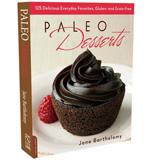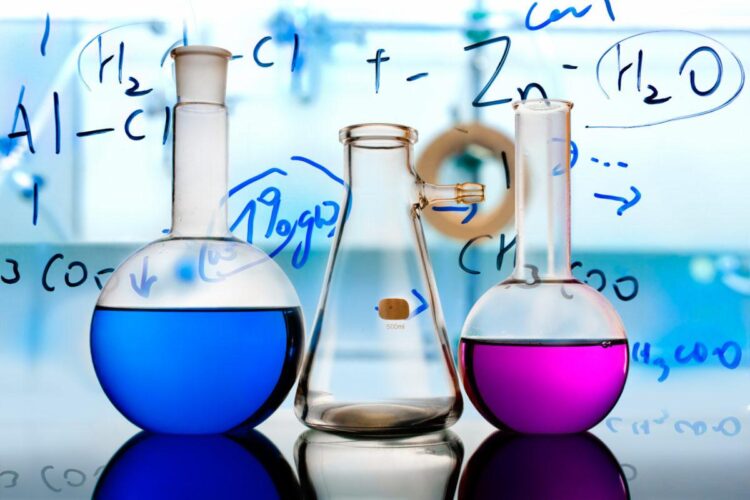Beware! When I see “Natural flavors” on a food ingredient label, right away I feel worried, anxious, unprotected, and suspicious. I conjure up bizarre images of chemical experiments in a toxic laboratory. What is the truth about “Natural Flavors”? What does the term actually mean? How can I protect myself from unhealthy ingredients not even listed on the label?
Oh dear! The word “Natural” has no meaning.
There are thousands of so-called “Natural flavors” used in processed foods ranging from lemon peel to MSG, to vanilla extract. While there’s nothing bad in the name and ideally a few of the so-called “Natural flavors” may be fine, this is a catch-all term for stuff they’d rather not spell out on the ingredient list. Consumers are just now becoming extremely aware of “Natural flavors”, as a general term for undisclosed additives that may be harmful to health. Some of the most toxic are MSG, Processed free glutamic acid, HPP, HVP, and GMO soy sauce. Fortunately not all “Natural flavors” are dangerous. However if we can’t know exactly what they are, it’s safest to avoid them all.
OK, What’s the Definition of Natural Flavor?
A Natural flavor is made from a single plant or animal. It can be an extract, essence, distillate, processed with heat, cold pressing, fermentation, or centrifuging.
What are a few “Natural flavors”?
A few common ones are Monosodium glutamate (MSG) or processed free glutamic acid, Hydrolyzed protein product (HPP), Hydrolyzed vegetable protein (HVP), Torula yeast, Beef lard, Soy sauce, All types of essential oils, Cinnamon bark, Sheep lanolin, Hemp, Massoya tree bark, Lemon extract, Lemon peel extract, Vanilla extract, All types of fruit extracts, Vegetable extracts such as Celery, Hickory, Lemongrass, Rosemary, Spearmint, and thousands more.
What are a Few Bizarre “Natural Flavors”?
- Shellac – used on Skittles and other candies to make them shiny, comes from the sticky secretion of the Kerria lacca beetle in East Asia.
- L-Cysteine, an amino acid and flavor enhancer in pizza and crackers, is extracted from human hair or duck feathers.
- Castoreum, aka “natural raspberry flavor” comes from the anal glands of beavers, secreted to mark their territory.
- Carrageenan is a starch extracted from various types of algae such as Eucheuma, Kappaphycus, or Irish Moss. However raw, unprocessed Irish Moss is very different, and is also called carrageenen.
How does the FDA define “Natural Flavors”?
“The term natural flavor or natural flavoring means the essential oil, oleoresin, essence or extractive, protein hydrolysate, distillate, or any product of roasting, heating or enzymolysis, which contains the flavoring constituents derived from a spice, fruit or fruit juice, vegetable or vegetable juice, edible yeast, herb, bark, bud, root, leaf or similar plant material, meat, seafood, poultry, eggs, dairy products, or fermentation products thereof, whose significant function in food is flavoring rather than nutritional. Natural flavors include the natural essence or extracts from plants.”
Natural flavors may be plant-based, or derived from animal products. Natural flavors must be from natural sources that have not been chemically modified in such a way that makes them different from their natural chemical state. They cannot contain artificial preservative, and cannot be extracted with hexane.
Natural vs. Artificial Flavorings – Which is Better?
Consumers generally prefer “Natural flavors” to “Artificial flavors”, believing they are healthier. However often Natural and Artificial flavorings contain the same chemicals. The difference is that “Natural” flavorings are derived from a real plant or animal, whereas the artificial flavorings can be synthesized from the same chemical in a laboratory.
“Natural flavors” usually cost more to make than “Artificial flavors”. For example, natural coconut flavoring comes from the massoya lactone chemical, found in the bark of the Massoya tree in Malaysia. Collecting the bark kills the tree, and the process is costly. But the massoya lactone chemical can also be synthesized economically in a food laboratory. Which is better?
Vague Labels Masquerade as “Healthy”.
Manufacturers are not required to list the source of “Natural flavors” as long as all the ingredients are GRAS, or Generally Regarded as Safe. This allows companies to maintain proprietary recipes. While it is convenient for manufacturers to use a general term “Natural flavors”, this ambiguous, misleading practice causes confusion and health problems.
History of MSG
In 1960 American food producers discovered how to use GMO, genetically modified bacteria to ferment glutamic acid, to synthesize an exciting savory flavor. Called “umami”, this delicious flavor from real seaweed had been used in Japanese cooking for centuries. Monosodium Glutamate (MSG) or “processed free glutamic acid” was born, and was approved by the FDA as a “natural flavor”. Wow! Even the most disgusting, stale foods tasted delicious when enhanced with MSG. New products appeared, enriched with MSG, such as “Accent” flavored salt, sausages, cured meats, fast-food chicken patties, bouillon cubes, instant soup stocks, ramen noodles, and even protein powders.
Health Risks of MSG
Considered an “excito-toxin” much like aspartame, MSG excites the brain centers related to taste. It has been associated with food cravings, food addiction, and obesity in humans and rats. MSG also produces brain lesions, migraines, nerve degeneration, endocrine disorders, and retinal damage. Often used in Asian foods and MSG-infused soy sauce, severe headaches and bloating from MSG are known as the “Chinese restaurant syndrome”. When eating in Asian restaurants, it’s important to ask for MSG-free food. Unfortunately MSG is difficult to detect in the grocery aisles, as it can be listed under 100 other names like HVP, Soy Protein Isolate, or Yeast Extract. It’s impossible to know, since “Natural flavors” might very well include MSG.
Conclusion – My Take on “Natural Flavors”
I’m really trying to be unbiased in this article, because some food producers do have an interest in the health of their customers. However in truth I will always avoid any product with “Natural flavorings” on the label. I generally eat only original foods, such as unprocessed fruits, vegetables, nuts, and meats. Eating real food is not a sacrifice for me, as there are precious few packaged items in my kitchen. No bottled drinks. No commercial teas – just pure water and plain herbs to make delicious infusions. If your diet includes processed or refined foods, just be aware that the term “Natural flavorings” tells you nothing. The product might contain MSG, beetle shellac, beaver scent, GMO soy, or worse.
The only way to avoid Natural or Artificial flavorings altogether is to stop eating boxed, packaged or canned foods. Since you don’t know precisely what it contains, your health is at risk. My suggestion is to put it back on the grocery shelf and go for simple, unprocessed foods.
“You don’t have to cook fancy, complicated masterpieces, just good food from fresh ingredients.” ~ Julia Child
References:
FDA Guidance for Industry: A Food Labeling Guide (Ingredient Lists)
http://www.fda.gov/Food/GuidanceRegulation/GuidanceDocumentsRegulatoryInformation/LabelingNutrition/ucm064880.htm#spices
OVERVIEW OF FLAVOR ADDITIVES Prepared for the USDA National Organic Program and the National Organic Standards Board October 14, 2005 http://www.ams.usda.gov/AMSv1.0/getfile?dDocName=STELPRDC5088008
FDA Regulations for Natural Flavors
http://www.ehow.com/list_7409993_fda-regulations-natural-flavors.html
FDA List of Natural Additives
http://www.accessdata.fda.gov/scripts/cdrh/cfdocs/cfcfr/CFRSearch.cfm?fr=172.510
CFR – Code of Federal Regulations Title 21
http://www.accessdata.fda.gov/scripts/cdrh/cfdocs/cfcfr/CFRSearch.cfm?fr=501.22
Natural Flavors Hit the Label
http://www.foodproductdesign.com/articles/2010/03/natural-flavors-hit-the-label.aspx
What is the difference between artificial and natural flavors?
http://www.scientificamerican.com/article/what-is-the-difference-be-2002-07-29/
Natural Flavors: the best stuff on earth
http://www.thatswhatshefed.com/2011/11/natural-flavors-best-stuff-on-earth.html
The Toxicity of MSG
http://www.kisswebpage.com/msg/





10 Replies to "AVOID! Toxic "Natural Flavors""
Michelle March 24, 2023 (3:19 pm)
Thank you for your post! I have – mostly – not consumed “natural flavors” or “organic natural flavors” for years now. It’s uncanny how many things they are in, even all those super cool powders and bars and drinks sold by famous functional medicine doctors and other health gurus have “natural flavors.” Did they not get the memo that these things are toxic and unnecessary? Of course, sometimes I drink a packaged tea only to remember to read the label, after the fact. It’s a good thing I love to cook with real food!!!
Darla December 29, 2022 (4:43 pm)
You didn’t discuss nanotechnology in natural flavors and other food additives. This technology reduces atoms/molecules of chemicals in our food to a size that allows them to penetrate the blood/brain barrier and accumulate in all organs, including the brain (similar to the mrna ‘vaccine’.) They are in over 12,000 food products. Watch “Facts with Roman” on youtube, he recently did an episode on nanotechnology in food.
Jane Barthelemy January 8, 2023 (6:22 pm)
Thanks Darla, You are so right. I appreciate your suggestion, and I will add a section on nano bots in food in this article.
You might appreciate my article “Living with Nano Bots”. https://janeshealthykitchen.com/living-with-nano-bots-how-to-avoid-and-clear-them/
Best wishes to you for your complete health!
Jane
Jane Barthelemy January 9, 2023 (1:43 am)
Thanks, Darla. WOW! Roman is awesome. I embedded his video in the article above. He shows how nano particles used in fold flavorings for decades have never been checked for human safety. Thanks again! Jane
jackie December 21, 2022 (12:28 pm)
The healthy brands I used to trust have ALL added natural flavors in the last 3-4 years. Why did every brand make the sudden move to this ingredient?
Jane Barthelemy December 23, 2022 (7:25 am)
Hello Jackie, Thanks for you comment. I have no words. You’re right, it’s very shocking. “Food” isn’t what it used to be. And industrial food is neither natural nor nourishing. Best to grown your own food, skip all packaged foods, and be healthy. Ha Ha! I wish I were kidding! Best wishes! Jane
Kim B. May 18, 2022 (10:18 am)
I have an allergy to Carvone, which is in spearmint, caraways seeds and dill.
I ended up with squamous cell carcinoma in my mouth after years of undiagnosed irritation from toothpaste etc.
Everything has spearmint in it these days.
There’s a Swedish study by Liv Kroona “Oral contact allergy to Carvone.
AuthenticVegan September 1, 2021 (7:22 pm)
Castoreum is also used to make “vanilla flavor” and “Strawberry flavor” as well.
Jane Barthelemy September 12, 2021 (7:48 am)
Oooohh Yuuch!! Just stop buying all processed foods. I like to hang out in the produce section and breathe in all the goodness. Best wishes for your delicious health! Jane
Maggie Braun June 6, 2021 (2:17 pm)
I’ve heard some very awful things about body parts baby parts aborted fetus parts. Why can’t they tell you what the natural flavor is. It’s too ambiguous I have to throw out a lot of food now I like to keep canned soups in the house but all of them have crap in them